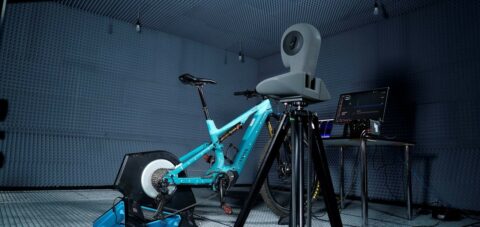Sound Quality Label for e-bikes
The sound quality of products is becoming increasingly important. This also applies to pedelecs, which are becoming more popular among older people as well as younger buyers due to changing mobility behavior and environmental awareness. Since the electric motor of pedelecs emits audible sounds and product noise is one of the most important product features for purchasing decisions, information about the sound quality of the product is of high interest to potential buyers.
As part of this project, which was carried out by HEAD acoustics GmbH in cooperation with Prof. Dr. Fiebig of TU Berlin from January 2021 to August 2022, a Sound Quality Label for e-bikes was to be developed that provides information for consumers regarding the acoustic comfort of electric bicycles. The overarching goals of the project were to gain insights into the effect of e-bike sounds on people – both for riders and bystanders – to enable a perception-based assessment of the acoustic comfort of electric bicycles, to make information on the acoustic quality of electric bicycles available to the public, and thus contribute to a more comfortable and healthy acoustic environment.
The investigations followed the approach common for independent testing institutes to enable a standardized, transparent, fully documented, and therefore reproducible evaluation of the electric bicycles under investigation. Since e-mountain bikes (e-MTB) and e-city/e-trekking bikes (e-Trek) had the largest market shares at the time of the investigation, 6 e-MTBs and 8 e-Treks were selected for this project.
Milestones / Achievements
The e-MTB and e-Trek bicycles considered were measured on a test bench and subjected to extensive listening tests. For this purpose, a standardized procedure for collecting assessments of the sound quality of pedelec sounds under controlled conditions was developed and applied by a jury consisting of 37 participants.
The jury tests provided comprehensive data to determine the relationship between signal properties and sound ratings. Based on the data from the listening tests, metrics for sound quality were developed. It was found that the sound quality of pedelecs can be well described by the psychoacoustic parameters loudness, sharpness, tonality, and impulsiveness. It also turned out that the psychoacoustic parameter loudness is most important for the assessment of pedelec sounds under all driving conditions. Other psychoacoustic parameters such as sharpness and tonality negatively affect the sound quality as these properties attract unwanted attention. In addition, disturbing sound patterns lead to a deterioration of the sound quality of the product, which can be captured by the parameter impulsiveness. Based on the information about acceptable and unacceptable pedelec sounds, a kind of sound quality label was proposed, similar to the widespread EU energy label, which informs laypeople about the perceived sound quality of products.


